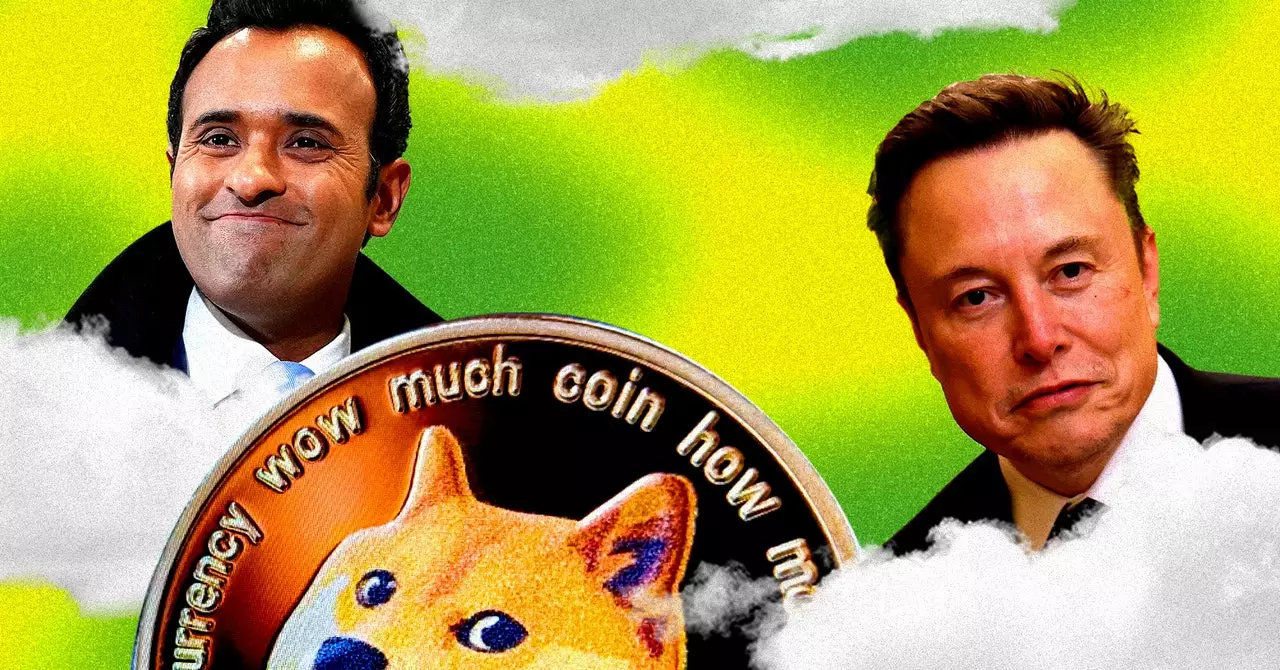In recent years, the merger of technology, finance, and culture has taken fascinating forms, especially with the rise of cryptocurrencies. Among these, the infamous Dogecoin (often known by its acronym DOGE) has become more than just a meme coin; it’s entered the realm of significant discourse, inclusive of government proposals. This article aims to dissect the intriguing layers of DOGE, drawing connections between its origins as a joke and its potential implications in governmental structures.
Dogecoin was created in 2013 as a lighthearted cryptocurrency, a parody of Bitcoin that featured the Shiba Inu dog from the popular “Doge” meme. At its core, Dogecoin represented a humorous take on the cryptocurrency market, which many perceived as overly serious and speculative. Unlike many cryptocurrencies aimed at serious financial applications, Dogecoin’s light-hearted beginnings allowed it to gain traction among those looking for a fun way to engage with the world of crypto.
Yet, as strange as it may sound, this playful coin garnered a passionate community, leading to a growing realization of its potential. Elon Musk, a key influencer in the tech landscape, notably endorsed Dogecoin, contributing to its popularity. Suddenly, what began as a humorous commentary on the cryptocurrency frenzy evolved into a legitimate player in digital finance.
The fascinating evolution continues with the recent rebranding of DOGE as the “Department of Government Efficiency.” This transition from meme coin to a proposed governmental initiative exemplifies the fluid relationship between culture and economic innovation. The Department of Government Efficiency aims to introduce new ideas for streamlining governmental processes through technology.
This shift raises crucial questions: Can a cryptocurrency that started as a joke truly impact governmental efficiency? The proponents argue that integrating technology into governance can potentially reduce redundancy and improve transparency. However, skeptics might see this as merely a gimmick or an opportunistic move leveraging Dogecoin’s fame to gain public interest.
As cryptocurrency continues to engulf the financial landscape, meme coins represent a unique cultural phenomenon. Their characteristics often serve as a critique of existing financial systems and the speculative nature of cryptocurrencies. However, they also encourage democratization in the economy, enabling people from all walks of life to participate in investing.
Yet, invested in this culture is the so-called “broligarchy,” a term used to describe a network of influential male figures driving these movements. These individuals often populate discussions surrounding cryptocurrency, leaving female voices and diverse perspectives in the background. The broligarchy emphasizes an atmosphere that can discourage broader participation, creating an echo chamber that stifles valuable discourse.
This exclusionary trend is not only detrimental but also counterproductive to the mission of improved governance and efficiency. A diverse approach to developing these technologies and policies is crucial if the goal is truly to benefit society as a whole.
The underlying question remains—what does the future hold for DOGE and the idea of a Department of Government Efficiency? While the potential benefits of employing cryptocurrency principles in governance are vast, there are likely many hurdles, including regulatory challenges, public skepticism, and technological implementation.
Moreover, will the ethos surrounding meme coins shift from the comedic roots to a serious reflection on the powers they hold? If the so-called Department of Government Efficiency truly sticks to its roots as a meme-driven initiative, it may bridge gaps in governmental function through entertainment-driven engagement. However, it’s essential to recognize that without a legitimate commitment to inclusivity and expert guidance, the initiative risks becoming mere spectacle rather than genuine reform.
While the journey of DOGE from a meme to a proposed government initiative is compelling, it is laden with complexity. It prompts us to reflect on the broader implications of technology in governance while reminding us that even humor has a serious side. Balancing innovation, community engagement, and meaningful discourse will be vital as society navigates this emerging frontier.

